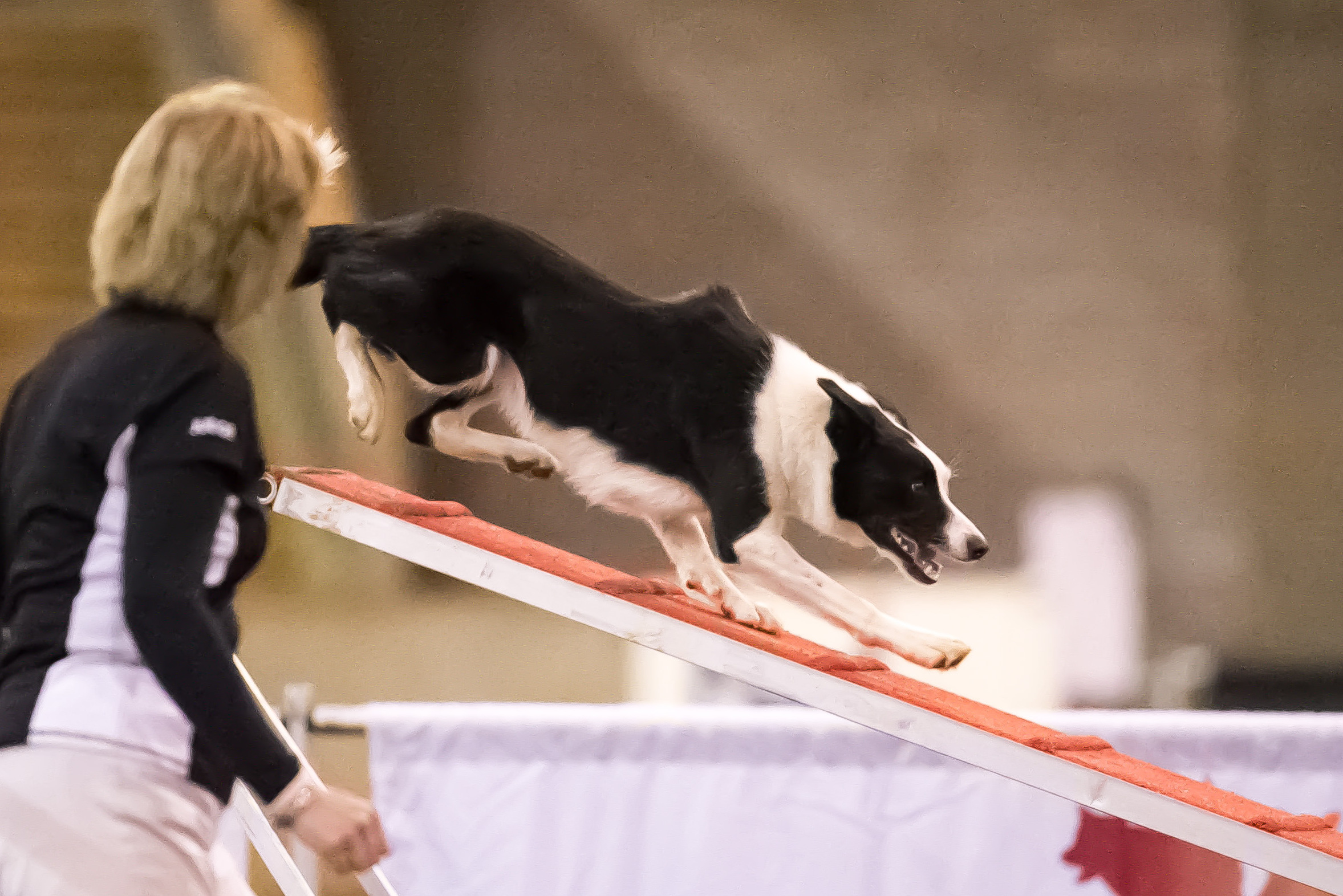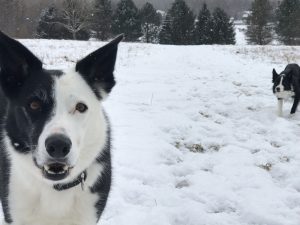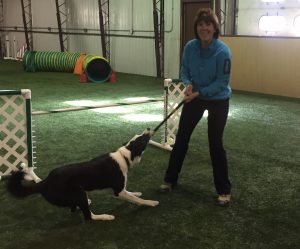
Tai at Cynosport Games
Photo by Great Dane Photos
I just completed a useful exercise…looking back over the year and planning for next. That’s right… I did my once or twice a year goal setting/review exercise. I know goal setting can seem like a daunting task. Entire books are written on the topic and if you have never done it before, it can be easy to get caught up in jargon and hard to know where to start. But it helps enormously to write down what you want to accomplish and how you will get there. This is definitely an area where roughly right is good enough and way better than getting tied up in knots about being perfect.
Here is what I did to review the year and set goals for 2014. The examples here relate to Tai. I do the exercise separately for each competing dog.
I sat down at my computer and made a list of “Things I learned in 2013”. I wrote them in whatever order they occurred to me and once I focused, the exercise took less than 30 minutes. The list includes handling insights and improved skills. This is the “looking back” phase. Here are a few examples of what I wrote:
- Tai has a huge stride and needs information that matches that striding. His information zone is way different than Breeze’s. He’s on the ground for a relatively short time. He needs information while he is still on the ground!*
- I am more comfortable with his speed now. I can judge more accurately when he will commit to an obstacle and where I will be when that happens*
- I am more comfortable with the distance I can get from him – ahead and laterally, allowing me to get into position for next cues*
- I’ve learned not to rush my cues. Let him finish one thing before I cue the next.*
- Tai has much improved serp and threadle understanding*
As I did the exercise, I also kept a separate list of “work in progress” items. Here are some examples:
- Execution of multiple cues in quick succession
- Response to my decel on a 270 when off course option presents itself.
- Weave entries – straight-on with speed
I then compared that list to my written goals for 2013 (I actually do have such a document :-)) and marked the items that matched up against my goals. Not surprisingly, they matched up very well! My 2013 goals for Tai were divided into 4 PRODUCT goals (outcome oriented) and 5 PROCESS goals (how I would achieve those outcomes). As an example, one of my PRODUCT goals was
- Handling: I know where I will be relative to Tai at any point on course. I use that information to plan my handling and improve timing – thinking instinctively about his where and my when.
And here are the three process goals (out of 5 total) that related to that product goal:
- Work jumping drills (double box, alphabet drills) and grids 1x per week. Add spreads to my grids; work my handling around spreads. Work fast tight lines (serps) with me ahead.
- Work challenging handling sequences incorporating international challenges with/without contacts. Work toward mastery.
- Train carefully…good handling at home translates to trials –> Focused. Confident. Relaxed.
I hope you have noticed that my examples of outcomes (goals) do not include winning or qualifying in competition. There is nothing wrong with including those kinds of product goals but for the year 2013, Tai and I were such a young team that I wanted to focus on teamwork and skills as my outcome focused goals. We actually did achieve some good success along the way – qualifying for the 2013 USDAA Mid-Atlantic Regional and Cynosport Games. And we did reasonably well at those events, even winning a Team class at the Cynosport Games and making the Grand Prix finals. That is a direct result of putting in the work as defined by my process goals.
But, we did NOT qualify for the 2014 AKC Nationals. This wasn’t a written goal at the beginning of the year but “would have been nice”. And it is disappointing that I won’t be able to play with Tai at an event a mere 5 hrs from home. (I will be there with Breeze!). But this unrealized goal presents a good time to point out that our agility goals are set within our larger life that includes family, friends, relationships, our other dogs, and other areas of interest. Our goals need to take into account priorities in those parts of our lives. We need to consciously decide how much we are willing to sacrifice to achieve a single goal. So, in my case, for a variety of reasons – my European Open adventure with Breeze, my daughter’s wedding, an injury I incurred in late summer, my USDAA goals with Tai, — all meant no AKC trialing for 4 months. Combined with a poor qualifying rate early in the year, and other family fun stuff, I found myself in early October facing an uphill battle to get Tai qualified for AKC Nationals. To do so, would have meant an all-out assault in trialing following USDAA Nationals. I took a long hard look, thought about what that would mean for agility vs home-life balance and gave it up. The right decision for me.
One more thing….the dreaded Record keeping. Now here I’m not talking about writing down every statistic associated with every run. I’m talking about bringing a learning and solution focus to results in competition and training. Keep it simple…I simply list our trial results (Q or not) along with any errors. The areas needing improvement pop out. Then I apply a solution focus…what is the one thing can I do to make that better? That helps inform my next training sessions or simply gets added to my list of handling reminders. Keep it simple and roughly right will get you most of the way there. An improvement for me would be to do the same record keeping for my training sessions.
So, what about goals for 2014? The reflection of where we have just come from in the context of my ultimate goal, made it easy to develop my “Tai” goals for 2014. They are written down and printed out in my training journal…ultimate goal, product goals and process goals. I’m comfortable with how they will guide me as we continue on our journey together!
If you want to read about goal setting, the books I like the best are “10-Minute Toughness” by Jason Selk and “With Winning in Mind” by Lanny Bassham. Have fun and remember roughly right can be good enough!
 As we approach the New Year, you may be making plans, setting goals and generally getting excited about what lies ahead. Me too! I’d like to point you to two sources for inspiration – both make the important point that You Get to Choose when setting goals for yourself and your dogs.
As we approach the New Year, you may be making plans, setting goals and generally getting excited about what lies ahead. Me too! I’d like to point you to two sources for inspiration – both make the important point that You Get to Choose when setting goals for yourself and your dogs.

